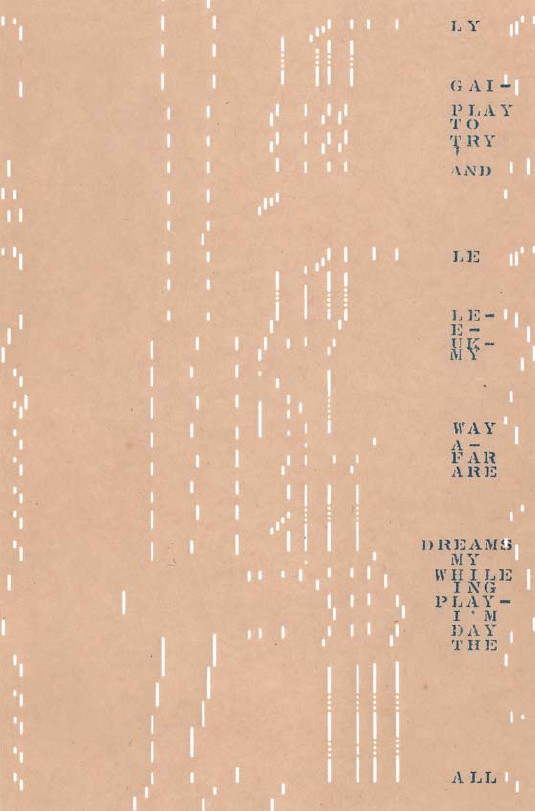- Relief printing
- Intaglio and planographic printing
- Color printing
- Bits and pieces
- Early photography in silver
- Non-silver processes
- Modern photography
- Color notes
- Color photography
- Photography in ink: relief and intaglio printing
- Photography in ink: planographic printing
- Digital processes
- Where do we go from here?
The piano roll

Punched paper with letterpress text. Artist unknown. Section of a piano roll. c. 1920. 16 1/2 x 10 1/2" (41.9 x 26.7 cm). The Museum of Modern Art, New York. Gift of Richard Benson. A section of a piano roll holding musical information in the perforated holes and libretto information in printed words to be read by the singer (who appears to be playing the piano). The roll moves downward as it is being played, so time is measured along its length, while bass notes are to the left and treble to the right, so musical tone is described across its width.
This is a section of a player piano roll, in which punched holes record the notes for an automated piano to play. The roll does two things: it stores information about the music and it instructs the piano how to play that music. We tend to be muddled about this distinction. The distinction is important, because devices such as this roll are the roots of the digital age, and we can’t understand the computer and its power if we aren’t clear about what tool does what job. This strip of paper (cut from a far longer roll) acts as a memory device (like our computer’s hard drive) but it is also an active tool used in making the music.
The holes in the roll are all round—those that look like long cut-out lines are just a series punched closely together so that they overlap and make a continuously open section. The surface of the paper in any given area is either solid or not, and this division of the sheet into either of two conditions means that the information recorded there is binary. Only two conditions are possible on the paper; there is either a hole or not—nothing exists in between. We have already wrestled with the problem of ink on paper being binary—there is either a black mark, or the white paper, and nothing in between. Much of the technological development in printing has been aimed at getting around the problem of the binary nature of ink—at giving the black bits of pigment the appearance of tone. Here, on the piano roll, we see exactly the opposite going on: the roll has been made to transform the continuous—we say analog—nature of music into a binary code that can store it and then translate it back into sounds. The central activity in the digital age may be the computer’s manipulation of numbers, but a huge amount of effort is spent on the task of translation. Information must be translated from some data source in the world into the form in which the computer can handle it, and then, later on, that information must be translated back out, into a new version that may or may not be similar to the form originally imported. The word we use for this translation of information into the computer is “digitized.” By this we mean that the smoothly varying information of the world is turned into discrete values that can somehow be stored. In the piano roll those values have a binary form, but we always need to remember that digitization does not necessarily mean something has become binary. We could just as easily turn to a system that used more than two states, such as the method we use to count: for our day-to-day handling of numbers we use ten different ones, and so we say that our counting system is “base ten,” whereas the computer does all its work with “base two.”

